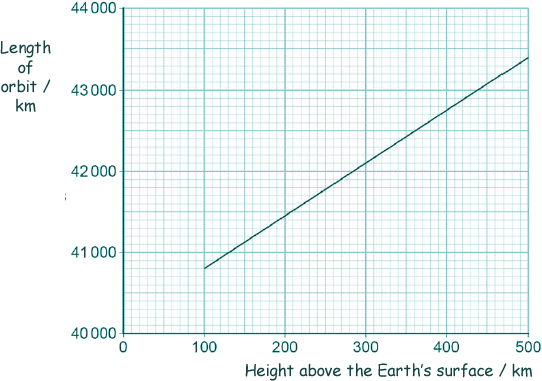GCSE level questions on the Earth in Space Q9. A satellite is in a circular orbit around the Earth. The diagram below shows the velocity of the satellite at two different positions in the orbit.
(a) Explain why the velocity of the satellite changes as it orbits the Earth. [3 marks] (b) The graph shows how the length of a satellite orbit depends on the height of the satellite above the Earth's surface.
A satellite orbits 300 km above the Earth's surface at a speed of 7.73 km/s. Calculate how many complete orbits of the Earth the satellite will make in 24 hours. [5 marks] (c) In 1772, an astronomer called J Bode developed an equation to predict the orbital radii of the planets around the Sun. The table shows Bode's predicted orbital radii and the actual orbital radii for the planets that were known in 1772.
[1 mark]
[2 marks] (Total 11 marks) |
Follow me...
|







